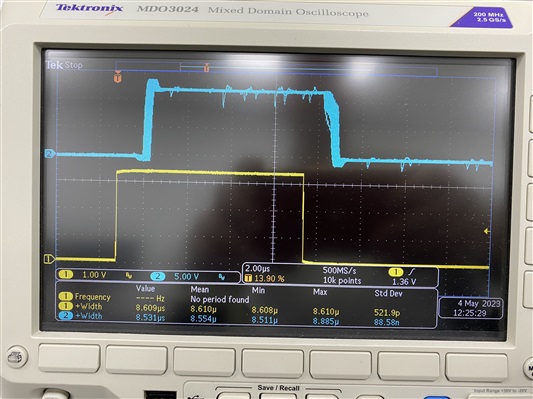Other Parts Discussed in Thread: DRV8872, DRV8701
Hi!
During PWM operation i'm measuring ~300ns jitter on the motor outputs of this driver. Is this normal?
I note for other models such as DRV8872, this sort of jitter has been classified as 'normal':
Let me know.
With Thanks,
Sam



